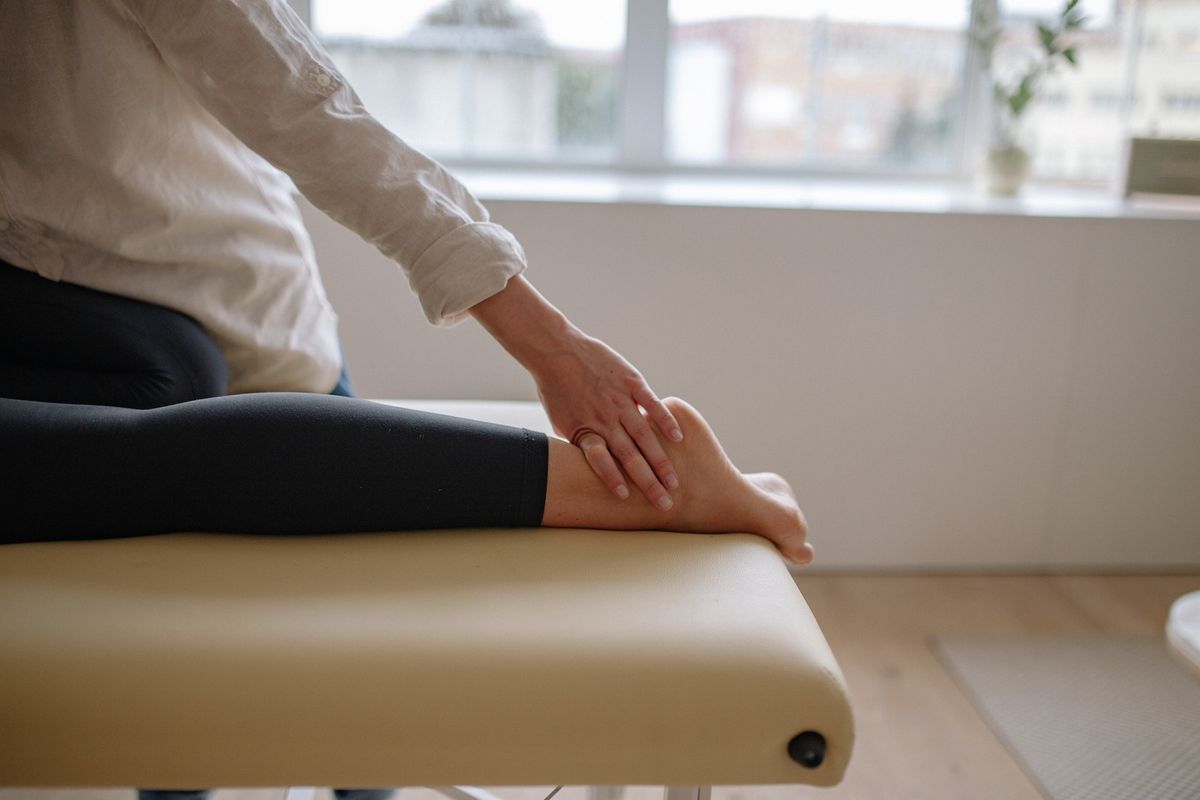Pain on Outside of Lower Leg Above Ankle

Pain on the outside of the lower leg above the ankle can be a common issue experienced by many people. This pain can range from mild to severe, affecting one's daily life and mobility. The reasons for this pain can be diverse, including trauma, overuse, or underlying medical conditions. This article will discuss the possible causes, symptoms, and treatments for pain on the outside of the lower leg above the ankle.
Causes
Peroneal Tendonitis
Peroneal tendonitis is the inflammation of the peroneal tendons, which run down the outside of the lower leg and around the lateral malleolus (the bony prominence on the outside of the ankle). This condition is often caused by overuse, improper footwear, or biomechanical issues such as overpronation. Repetitive stress on the tendons can lead to inflammation, pain, and swelling.
Lateral Ankle Sprain
A lateral ankle sprain occurs when the ligaments on the outside of the ankle are stretched or torn. This can happen during sports, physical activities, or simply by twisting the ankle while walking on uneven surfaces. The severity of the sprain can range from mild to severe, depending on the extent of ligament damage.
Stress Fractures
Stress fractures are small cracks in the bone that develop due to repetitive stress or impact. The fibula, which runs along the outside of the lower leg, is particularly susceptible to stress fractures. This type of injury is common among athletes, especially those who participate in high-impact sports or increase their training load too quickly.
Compartment Syndrome
Compartment syndrome is a rare, but serious condition that involves increased pressure within a muscle compartment, which can compromise blood flow and nerve function. Acute compartment syndrome can be caused by trauma or injury, while chronic compartment syndrome is typically due to repetitive strain or overuse. Symptoms include severe pain, swelling, and numbness in the affected area.
Symptoms
The symptoms associated with pain on the outside of the lower leg above the ankle can vary depending on the underlying cause. Common symptoms may include:
- Sharp or dull pain in the area, which may worsen with activity
- Swelling and inflammation
- Bruising or discoloration
- Decreased range of motion in the ankle
- Tenderness to touch
- Weakness or instability in the ankle
Treatments
The treatment for pain on the outside of the lower leg above the ankle will depend on the cause and severity of the condition. Some common treatment options include:
- Rest, Ice, Compression, and Elevation (RICE) - The RICE method is a common treatment for acute injuries, such as ankle sprains and tendonitis. Resting the affected area, applying ice, using compression bandages, and elevating the leg can help to reduce pain, inflammation, and swelling.
- Pain Relief and Anti-Inflammatory Medications - Over-the-counter pain relievers, such as ibuprofen or naproxen, can help to alleviate pain and reduce inflammation in the affected area.
- Physical Therapy - It can be beneficial for those suffering from pain on the outside of the lower leg above the ankle. A physical therapist can recommend specific exercises to improve flexibility, strength, and stability in the affected area.
- Orthotics and Supportive Footwear - Using orthotics or wearing supportive footwear can help to correct biomechanical issues and reduce stress on the affected area.
- Surgery - In rare cases, surgery may be necessary to address the underlying cause of pain on the outside of the lower leg above the ankle. This may include procedures to repair damaged tendonsor ligaments, or to address severe stress fractures or compartment syndrome.
- Lifestyle Modifications - Incorporating lifestyle modifications, such as weight management, proper warm-up and cool-down routines, and cross-training, can help to prevent further injury and pain in the future. Additionally, it's essential to gradually increase training intensity and ensure that you're wearing appropriate footwear for your specific activities.
Prevention
Preventing pain on the outside of the lower leg above the ankle involves addressing potential risk factors and practicing good self-care. Some preventative measures include:
- Proper Footwear - Wearing appropriate footwear that offers sufficient support, cushioning, and stability can help to reduce the risk of injury and pain. It's also essential to replace worn-out shoes regularly.
- Gradual Progression - When starting a new exercise routine or sport, it's crucial to progress gradually, allowing your body to adapt to the increased physical demands. Avoid sudden increases in intensity or duration, which can lead to overuse injuries.
- Strength and Flexibility Training - Incorporating strength and flexibility exercises into your fitness routine can help to improve the overall function and stability of the lower leg and ankle. This may include exercises targeting the calf muscles, peroneal muscles, and ankle stabilizers.
- Balance and Proprioception Exercises - Improving balance and proprioception can help to reduce the risk of ankle sprains and other injuries. Balance exercises, such as single-leg stands or wobble board exercises, can be beneficial in enhancing stability and coordination.
- Warm-Up and Cool-Down - Always take the time to warm up before engaging in physical activity and to cool down afterward. This can help to prepare your muscles and joints for exercise, reduce the risk of injury, and promote recovery.
Pain on the outside of the lower leg above the ankle can be caused by a variety of factors, including peroneal tendonitis, lateral ankle sprains, stress fractures, and compartment syndrome. Identifying the underlying cause is crucial for developing an appropriate treatment plan. By incorporating preventative measures, such as proper footwear, gradual progression, strength and flexibility training, balance exercises, and warming up and cooling down, you can reduce the risk of experiencing pain and injury in this area. If you're experiencing persistent pain or discomfort, it's essential to consult a healthcare professional for a thorough evaluation and personalized treatment recommendations.





